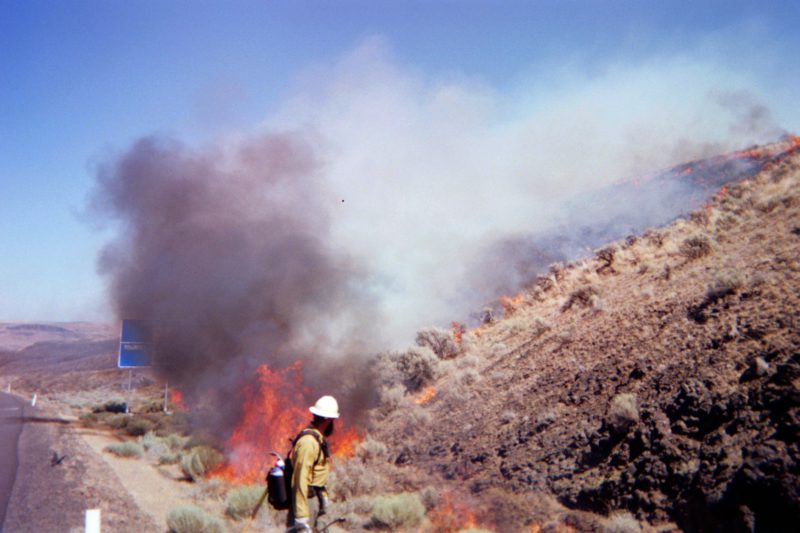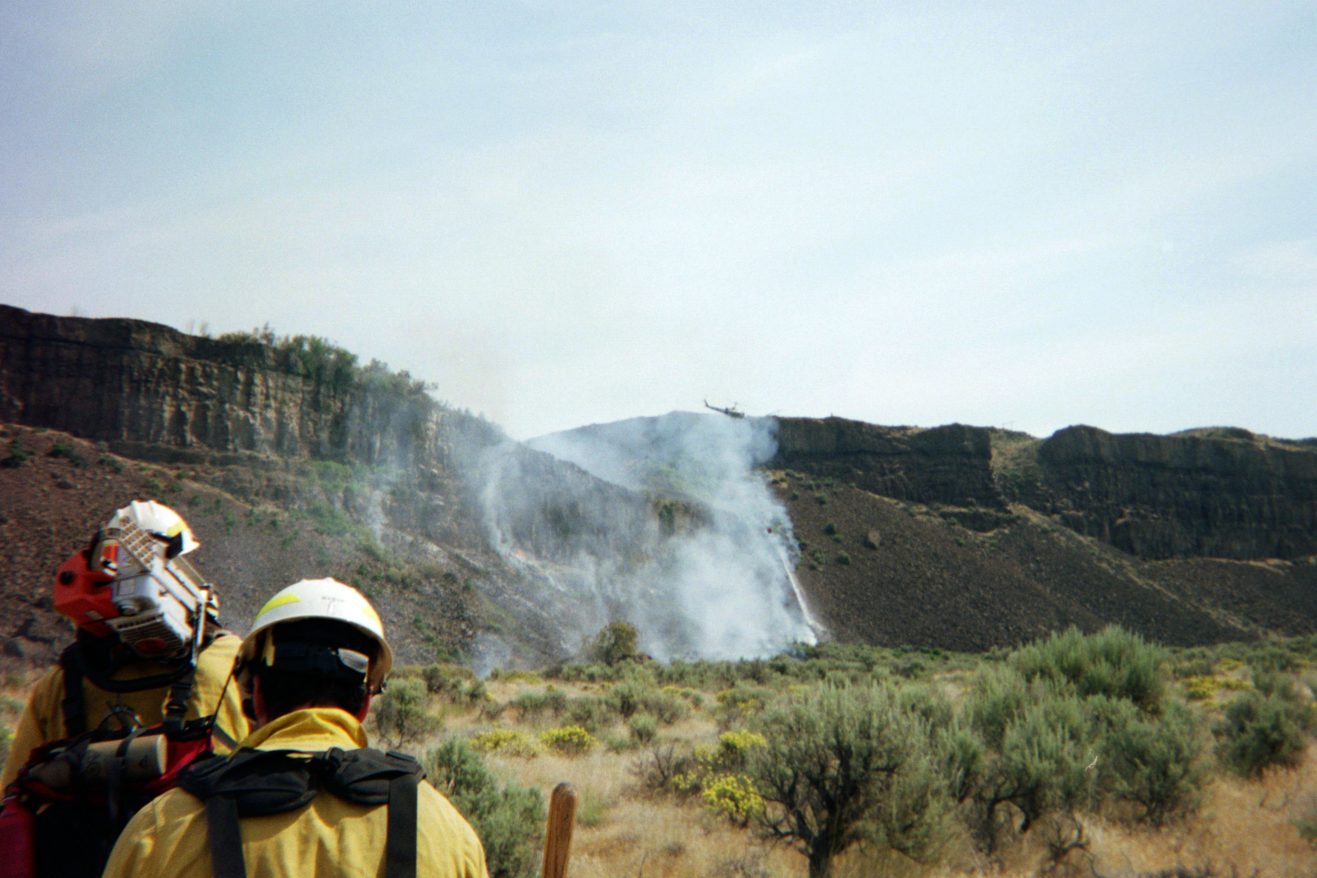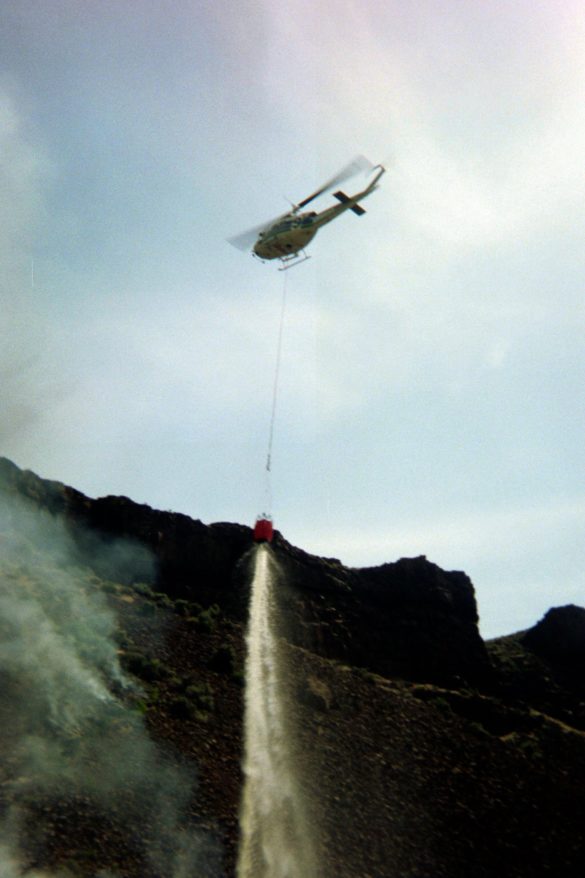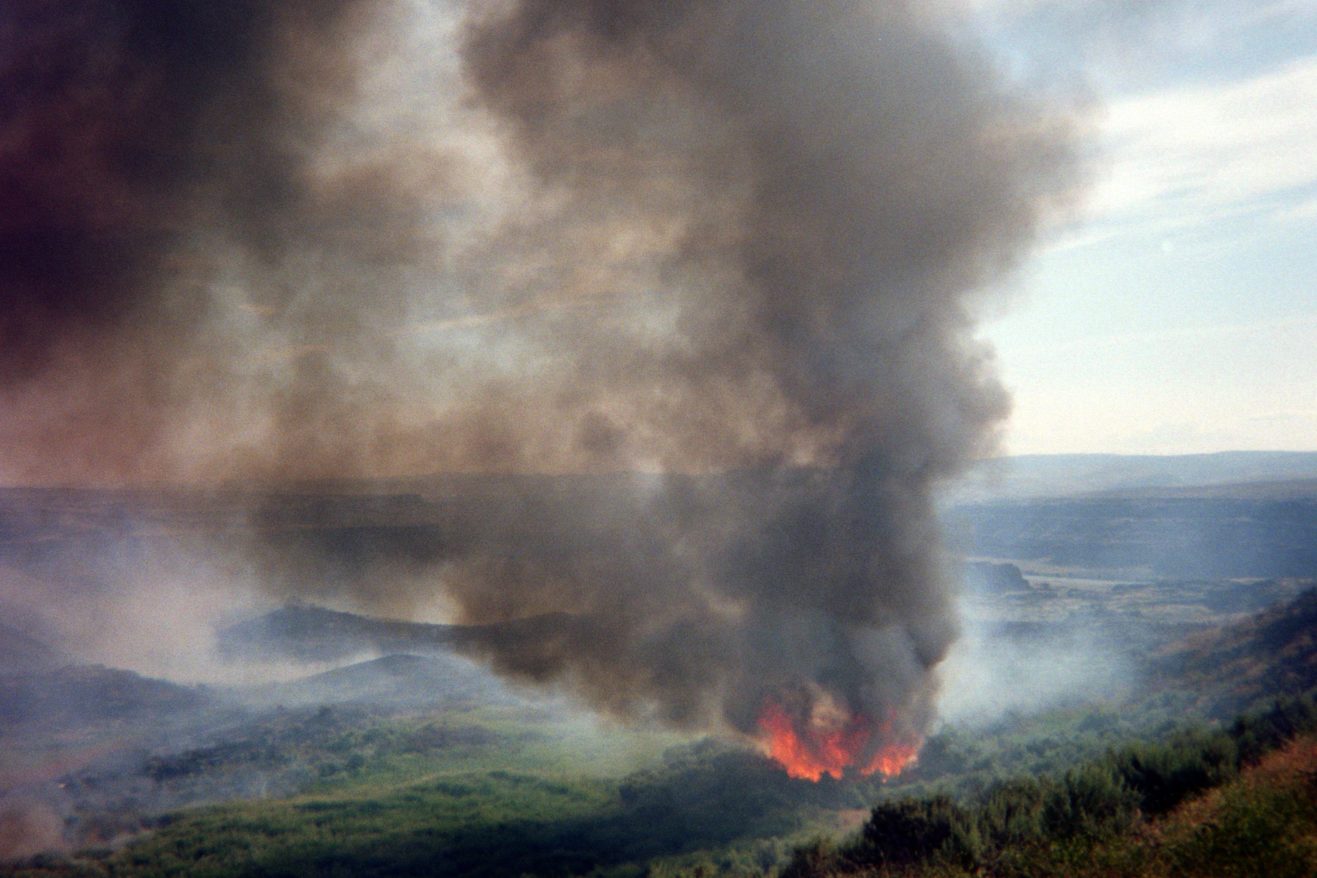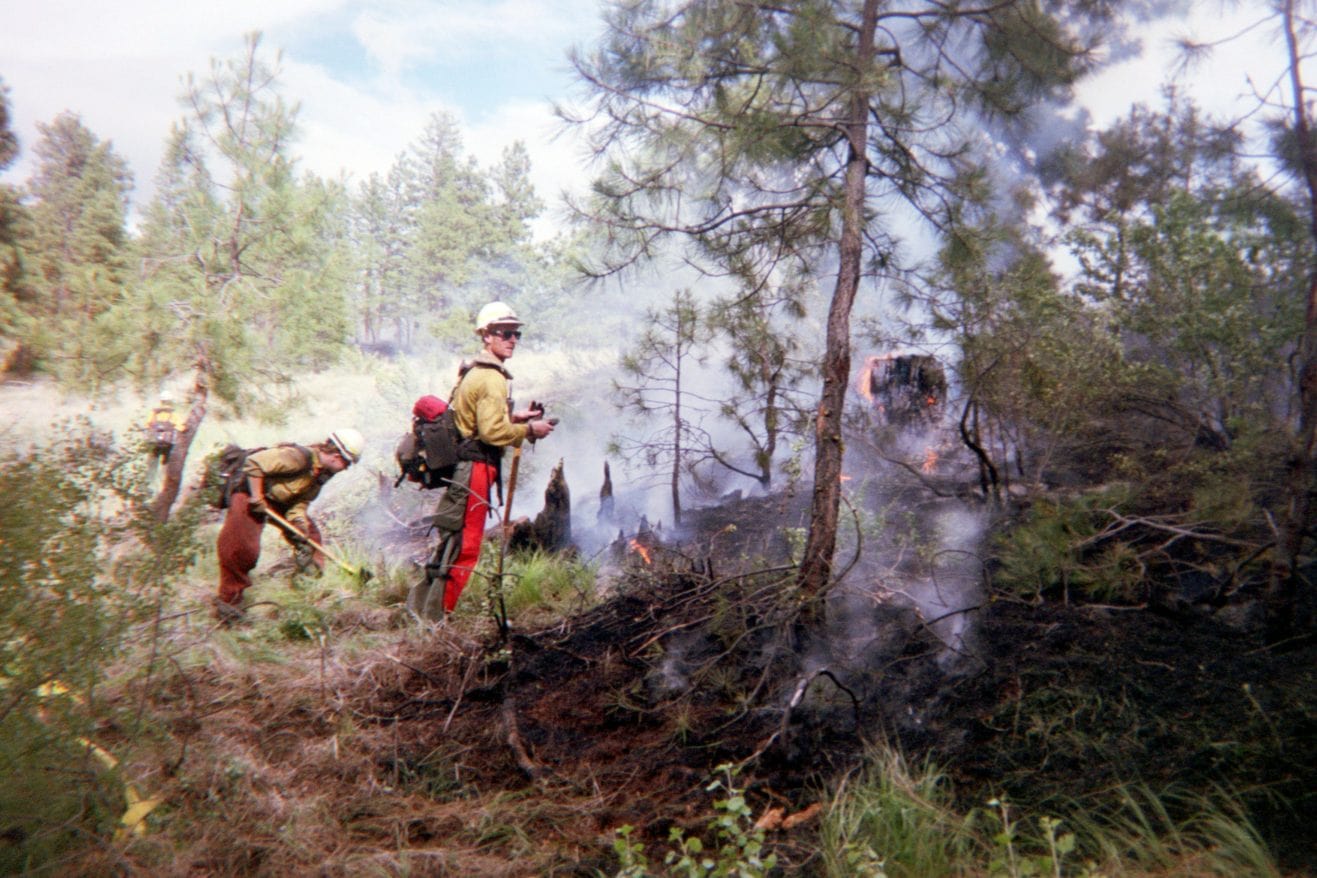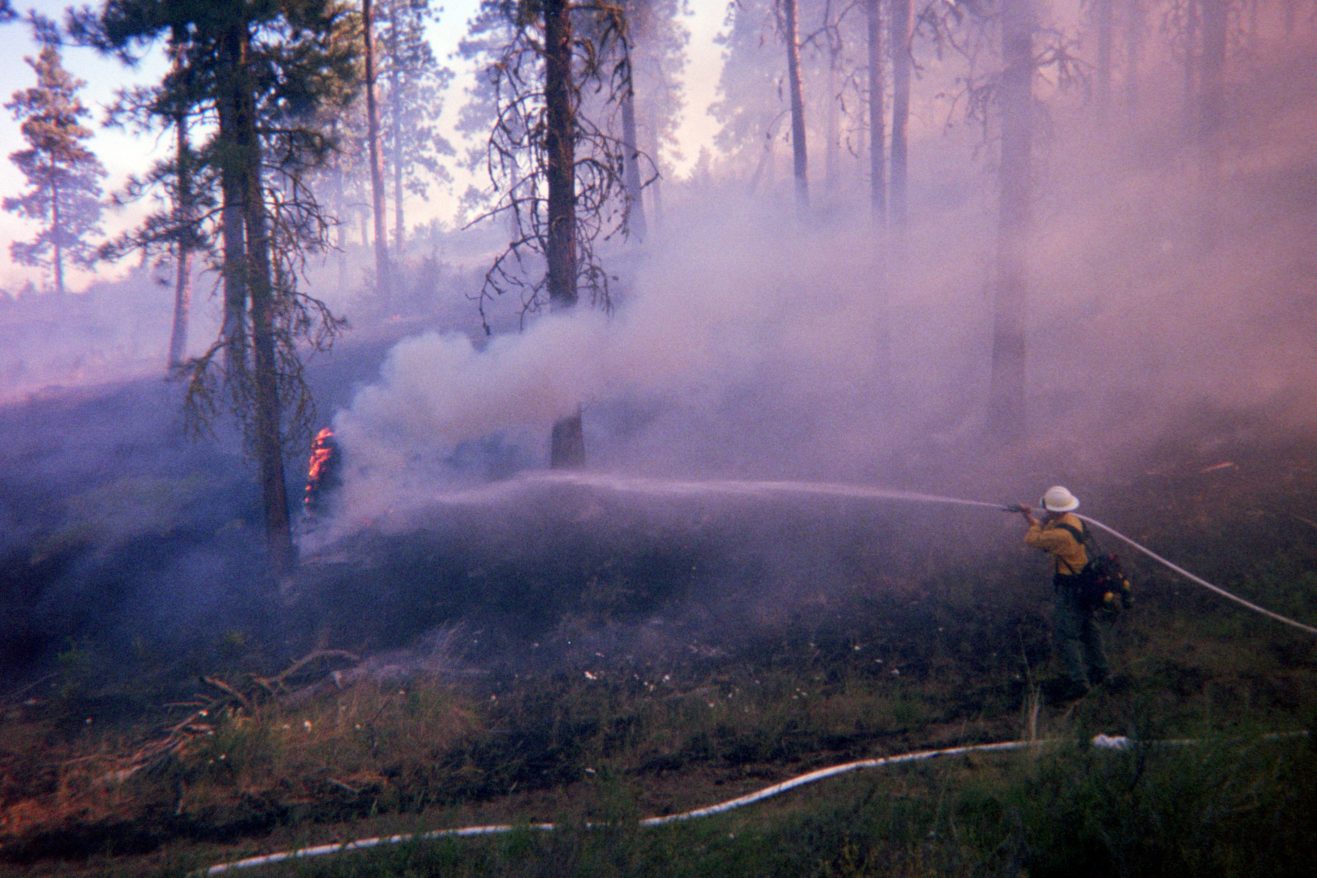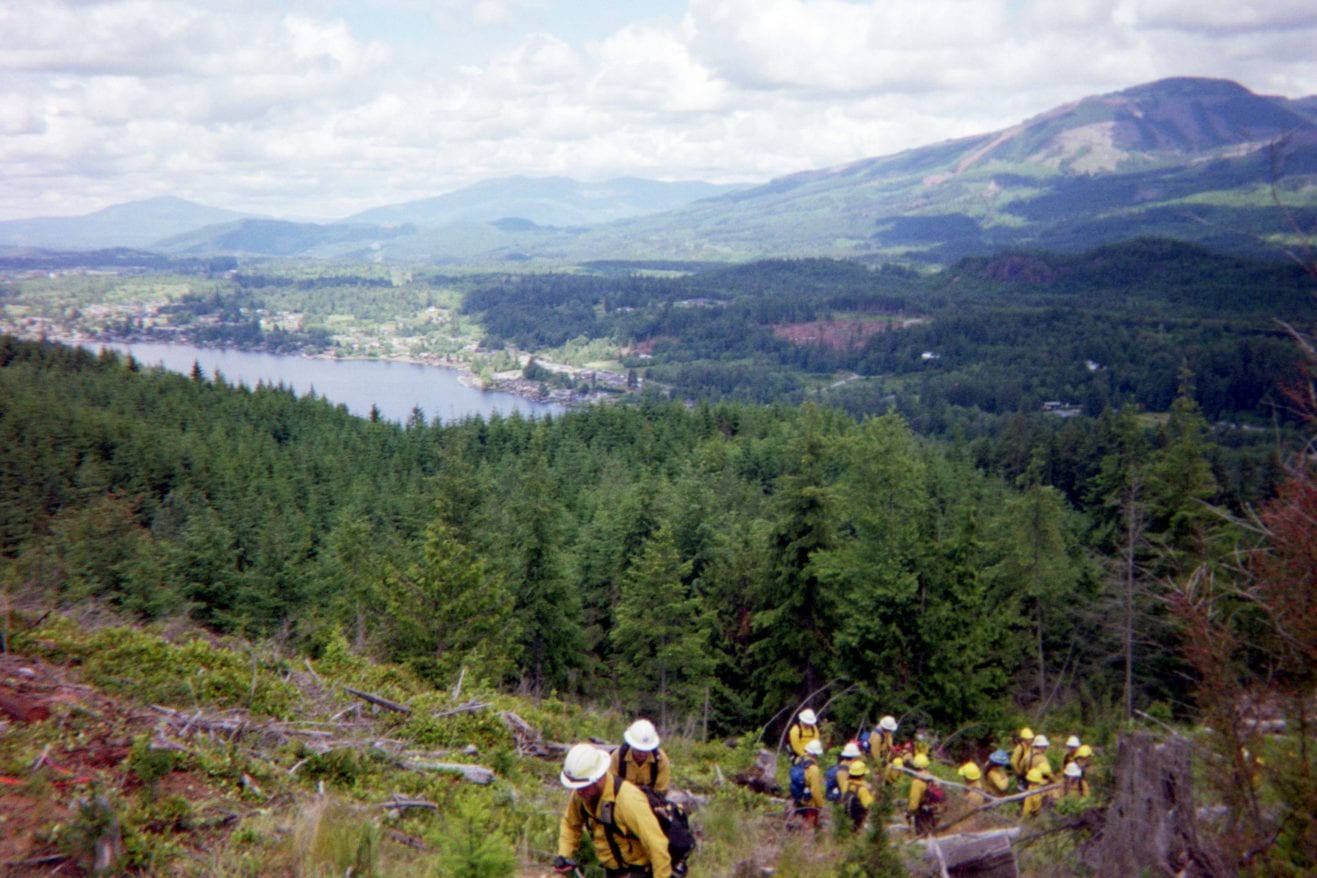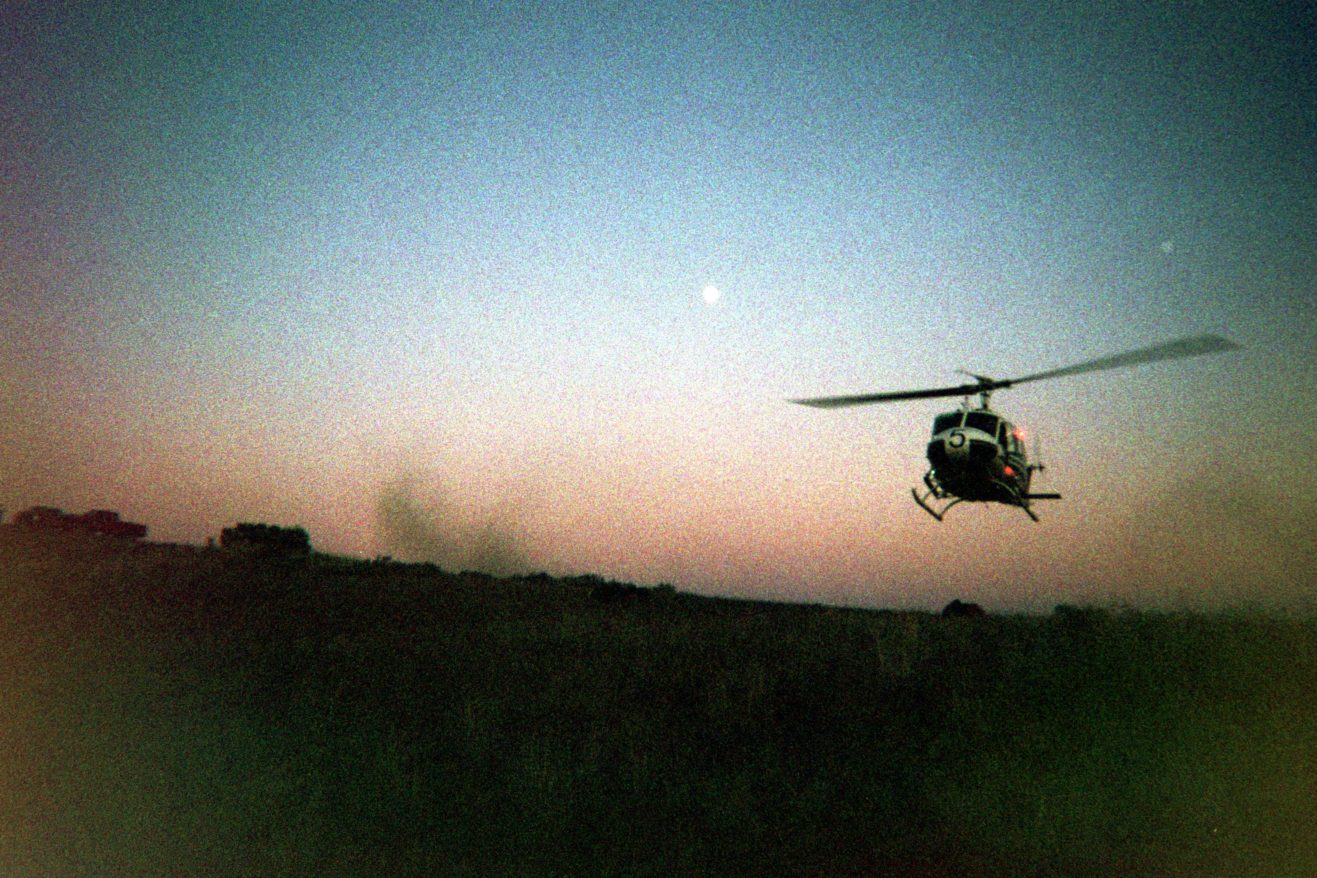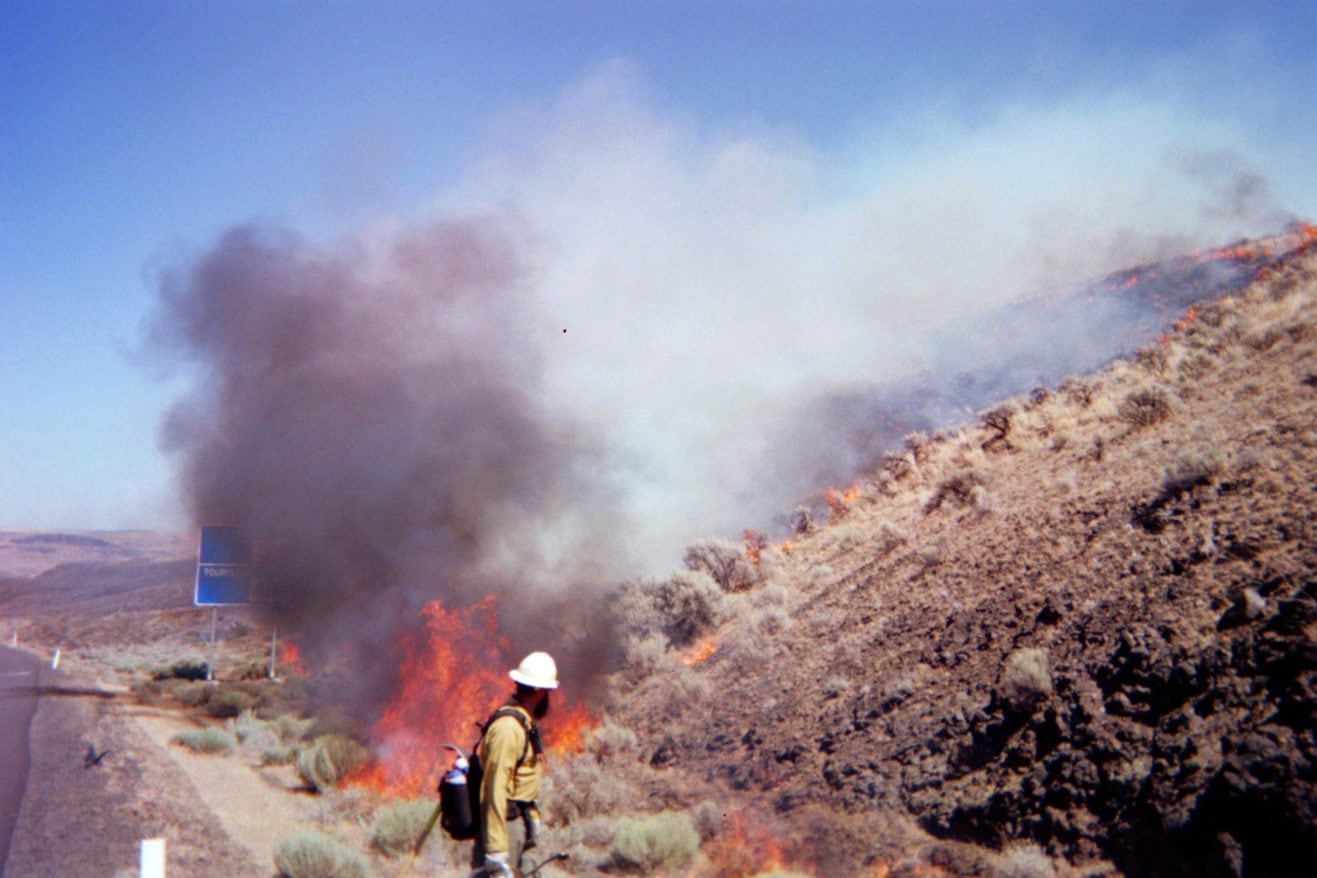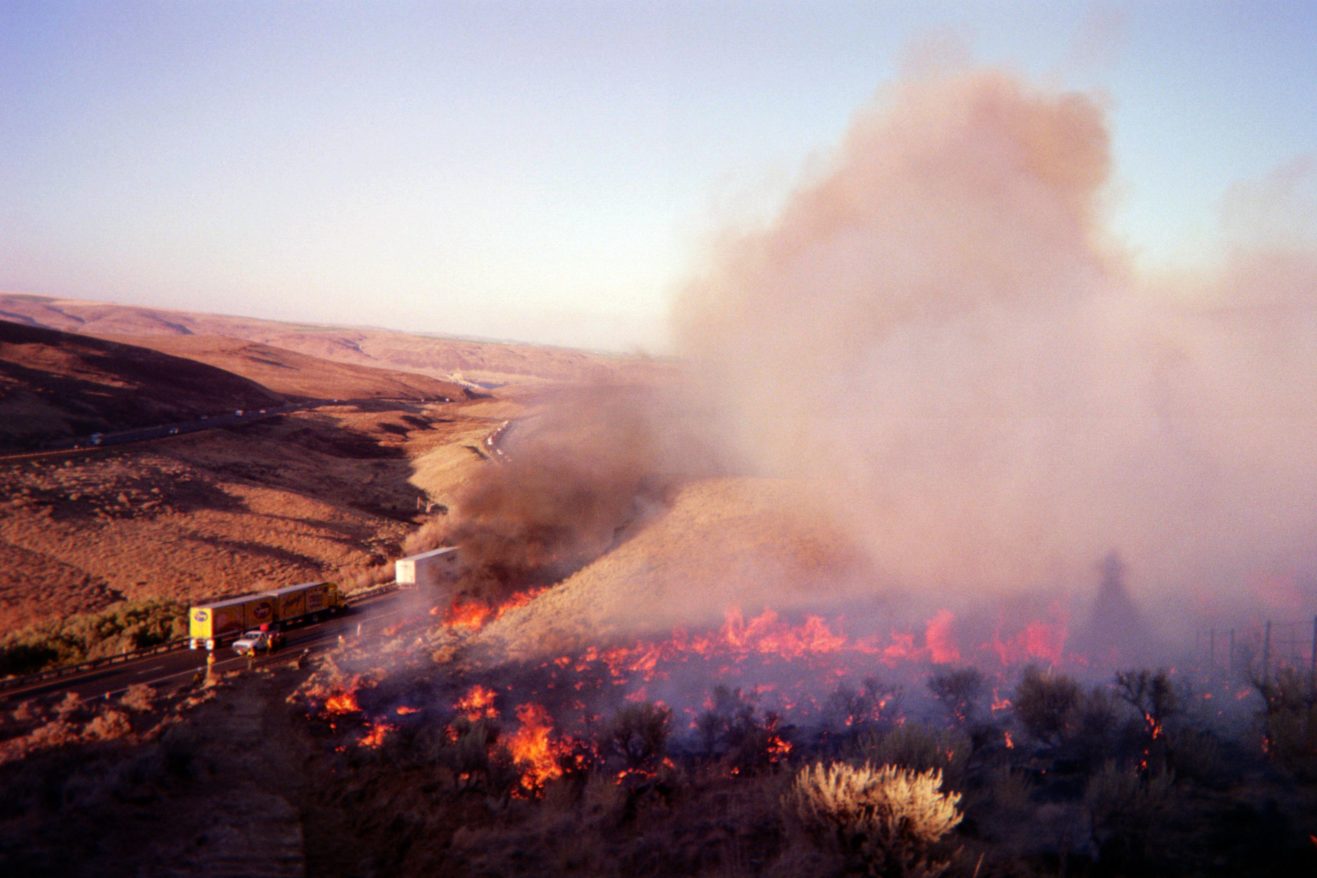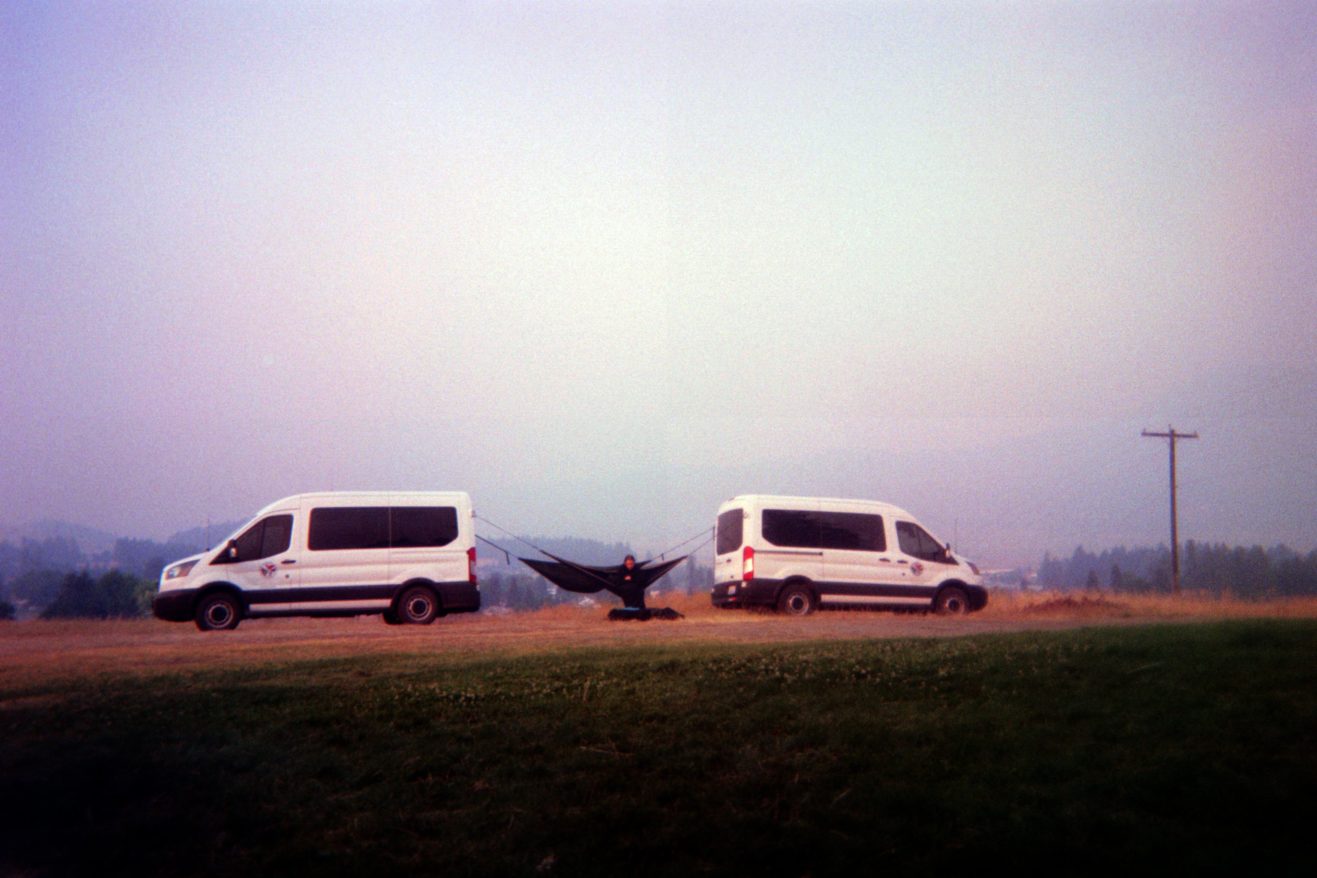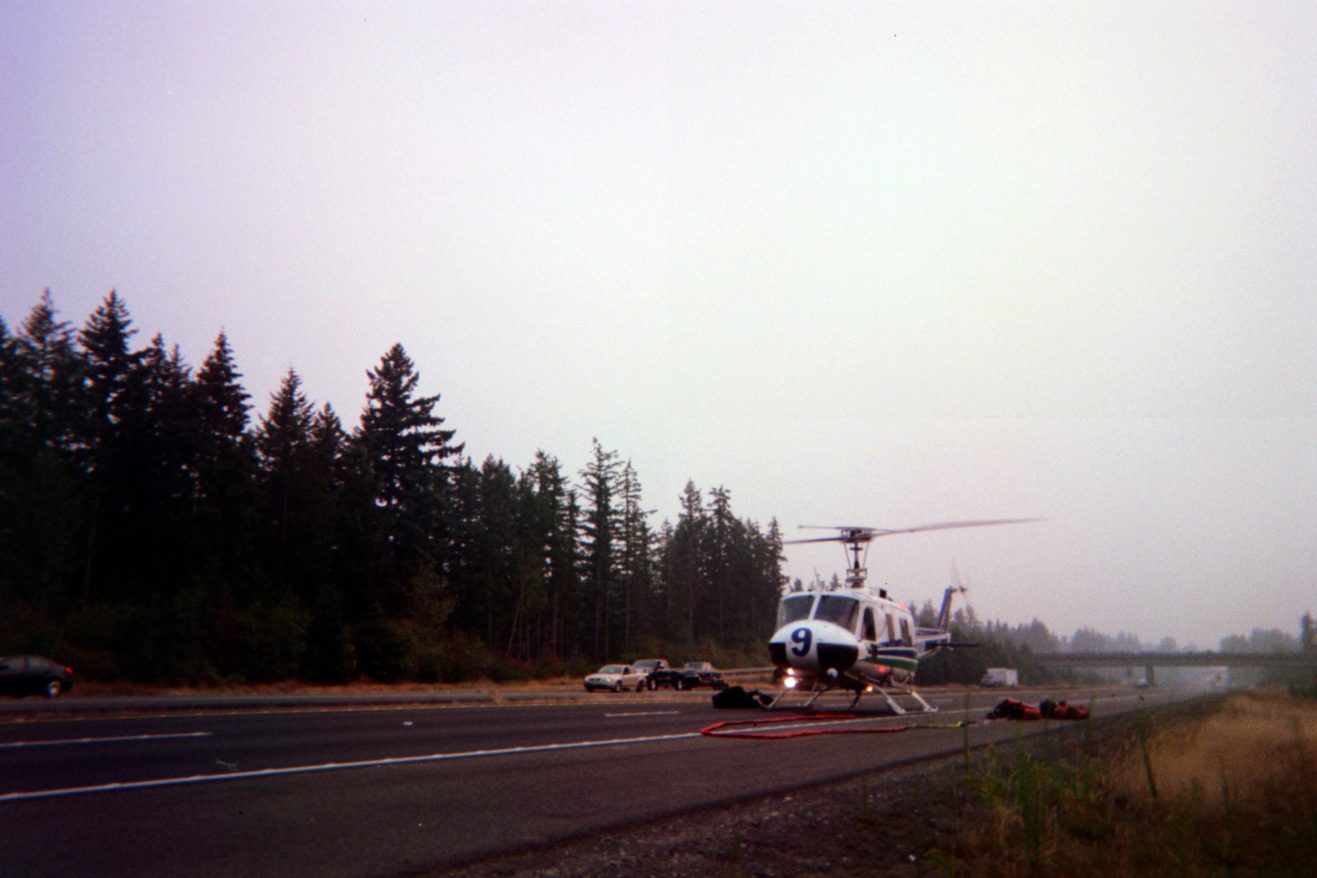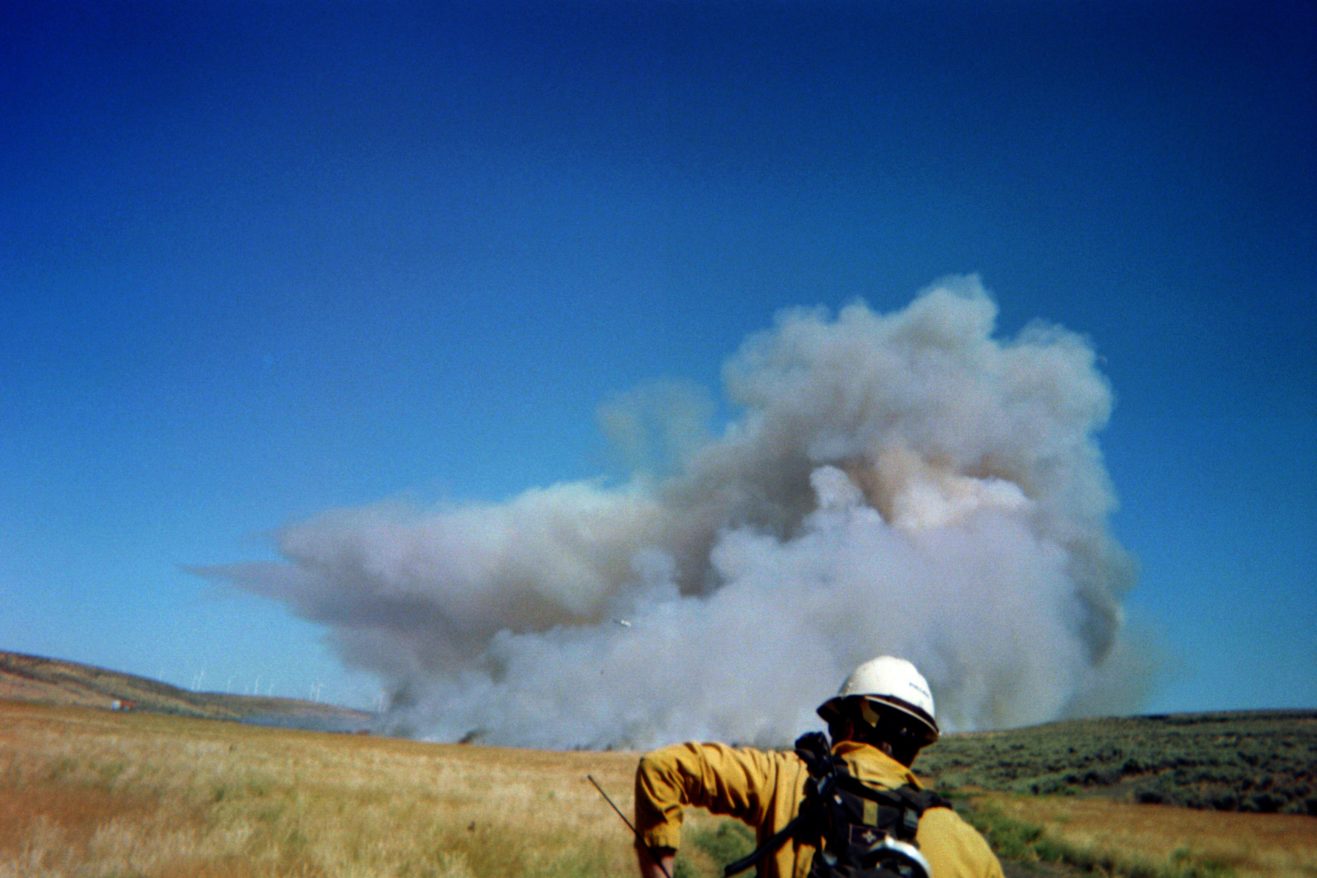Ask any wildland firefighter about the most difficult part of their job, and they’re likely to tell you about the boredom. Watching, waiting, and preparing occupies much of our time. The reason for this is simple: fires don’t tell you when they plan to start. They don’t tell you when and if they plan to blow up into a firestorm, or sputter out for no obvious reason. Because of this unpredictability, we end up a superstitious bunch, correlating our behaviors to fire activity like pagan priests reading an animal’s viscera. If you don’t lace up your boots, we’ll get a fire call; if you work out until your muscles cramp, we might get a fire call; if you dehydrate yourself with coffee and soda, we’ll definitely get a fire call. When we do finally receive a dispatch order, it’s typically in the afternoon, after the midday heat dries out the fuels (some things remain predictable). Then we have a brisk walk out to the helicopter pad, where our flight gear lies folded on a green nylon bench in the back of the helicopter. We untie the rotor blades, and within five minutes, we’re up in the air.
My fire career began in 2007, when I staffed an engine in rural western Washington. This was in the years before western Washington had serious fire activity, and we occupied most of our time with brushing out roads and doing ecology projects. The first true fire I worked was during my second year, when our engine was assigned to a fire in the eastern part of the state. For the first time, firefighting became what I, as a child, imagined it would be: digging line in the dark, close enough to the fire that my hands and face boiled from the radiant heat. Firefighting, even at its most intense, offers moments of freedom frequently unattainable in a digital age. Isolated in the forest and confronted with flames, the invasiveness of contemporary life momentarily recedes. The following year I left the engines for a hand-tool-wielding twenty-person crew—the most primordial form of fire suppression, essentially unchanged since the early twentieth century—and spent my next three summers living in the woods without internet or phone service.
My dad was a firefighter too, and my childhood summers were punctuated by him receiving fire dispatch calls at all hours. A dispatch usually meant that he would bring back souvenirs for me in the form of cookies, juice boxes and Gatorades from fire sack lunches. If the fire was big enough, I might receive a t-shirt featuring the name of the fire, printed with bright flames and helicopters, fire engines and fleeing woodland animals. The best souvenirs were the most ominous: glass bottles melted into puddles; tree resin baked into a shiny, amber-like substance; green ponderosa pine cones roasted like ears of corn. There’s something paradoxical about relics from a fire, the remainders of a destructive force. After six fire seasons of my own, I still find myself pocketing the smooth melted glass and deformed bullets that one finds in burned-over areas.
But fire is generative, too. The next spring, the burned area becomes adorned with purple-flowered fireweed.
01.
After arriving by helicopter, the crew hikes into the fire as the pilot engages the fire from the air. In the first few minutes after landing, the crew works in silence under the deafening thud of the rotor blade. Between the noise and the sound-proof flight helmets, the crew’s movements must be choreographed: the crew unloads their personal gear and the helicopter’s 240-gallon bucket, which they attach before the helicopter can fight the fire. All of this is done using only hand signals. (Grant County, WA. June 7, 2018.)
02.
Washington State Department of Natural Resources (DNR) helicopter 339WN drops water on a fire. Several of DNR’s Bell UH-1H helicopters (“Hueys”) saw action in Vietnam before retiring into the fire service. Lore has it that bullet holes still adorn one particular helicopter, though we take the helicopter’s battle scars to be a sign of good luck.
There’s a joke among firefighters who staff helicopters that we—the firefighters—are incidental; it’s the air power that the incident commander wants. Besides aircraft, however, very little has changed in firefighting since the Forest Service first began organized fire suppression in the early twentieth century. The majority of the work is still accomplished with hand tools and by ground crews. (Grant County, WA. June 7, 2018.)
03.
An especially frustrating aspect of firefighting is being confronted with one’s inability to stop a fire. In this particular image, the ground crew has moved to safety after attempting to halt the fire’s growth. Knowing when to retreat is a crucial skill for any firefighter, as most fire-related fatalities result from not evacuating from a potentially dangerous location in a timely fashion. The fire pictured is especially dangerous, as it is burning at a low elevation and will likely increase in intensity when moving uphill. (Grant County, WA. June 7, 2018.)
04.
Two helitack sawyers take a break from chainsaw work to dig out handline around an active area of the fire perimeter. Digging handline (as opposed to dozerline, built by bulldozers) is the fundamental task of wildland fire suppression, and the simplest. Using what are essentially garden tools, firefighters dig a shallow trench around a fire in order to remove flammable material and stop the fire’s progress. The first line dig of the season makes your hands bleed from cuts and torn blisters. We rarely wear gloves when digging, as it’s best to have access to all of your senses—your hands are often closest to the fire, and the body’s instinctive reaction to intense heat shields you from dangerous proximity to the flames. (Ridge Road Fire, Kittitas County, WA. June 25, 2018.)
05.
After a fire’s perimeter is secured with handline, engine crews lay hose around it—a welcome aid after hours of digging. In over a century of professional wildland firefighting in the United States, the process remains elemental: firefighters use earth and water to stop fire. (Wenas Fire, Kittitas County, WA. June 26, 2018.)
06.
Crews make their way up through a clear-cut during a training day. As fire activity becomes more intense and widespread, and the state hires more firefighters, training becomes an increasingly crucial task. Most new firefighters are eighteen or nineteen years old, and firefighting might be their first job—my own training took place a week after my 18th birthday. The relative youth of many firefighters gives the job a deceiving veneer of a wilderness summer camp. (Training Fire, Skagit County, WA. June 30, 2018.)
07.
Due to safety regulations, all DNR helicopters must be on the ground by 30 minutes after sunset. In our jargon, we call this “pumpkin time,” a nod to the Cinderella story, where the princess’s carriage turns into a pumpkin at night. It’s also a tongue-in-cheek embrace of the tendency for helitack crews to be derided as “princesses” by those in the wildfire community who do more “rugged” work. Where the ground crews are limited by road access, and must frequently hike long distances in and out of fires, helitack crews disembark from wherever they find a suitable landing zone, typically as close to the fire as is safely possible. (South Ahtanum Creek Fire, Yakima County, WA. July 4, 2018.)
08.
While firefighters are limited in the work they can each accomplish, fire grows exponentially. Although counterintuitive, a controlled burn is often the quickest and most efficient method of halting a fire’s growth, allowing a small group of experienced firefighters to secure miles of fire perimeter during a single shift. Our most intimate interactions with fire occur during controlled burns. We are, in a literal sense, fighting fire with fire: using torches filled with a mixture of gasoline and diesel to herd flames. In this image, the helitack crew sets fire to the edge of eastbound I-90. (Boylston Fire, Kittitas County, WA. July 20, 2018.)
09.
In this photo, the state patrol has recently reopened I-90 after nearly 24 hours of closure, and cars and trucks now join fire engines on the interstate. Although the phrases “forest fires” and “wildland fires” conjure up images of the wilderness, in our professional experience, many fires occur close to towns and highways. (Boylston Fire, Kittitas County, WA. July 20, 2018.)
10.
Many firefighters are away from home for weeks or months at a time, and spend their nights sleeping in whatever spot they can find. Here, a helitack crew member rests in the hammock he’s strung up between two DNR vans. The camping spot is in Colville, overlooking the Okanogan Valley, which is choked with smoke from various wildfires. (Sheep Creek Fire, Stevens County, WA. Aug. 1, 2018.)
11.
Landing a helicopter in a typically unavailable place inspires a childlike thrill. A fire burning adjacent to Highway 18 in Covington, WA gave us the opportunity to land on and take off from the closed westbound lane. In other scenarios, we landed in highway rest areas, backyards, and abandoned commercial lots. (King County, WA. Aug. 19, 2018.)
12.
The Boylston Fire was my first big fire after five years in graduate school, away from firefighting. Carried by high winds and dry fuels, the Boylston Fire would explode to nearly 60,000 acres during the next 24 hours and continue to grow in the days following, causing the complete closure of I-90. The initial attack phase of firefighting demands undivided physical and mental attention, and is often accompanied by extended periods of physical discomfort. Your backpack straps chafe your shoulders, your feet and hands blister, your sinuses and lungs burn from inhaling smoke and dust. A firefighter coming off an initial attack shift cuts a John-the-Baptist-like figure: a harried prophet emerging from the wilderness. (Kittitas County, WA. July 19, 2018.)

